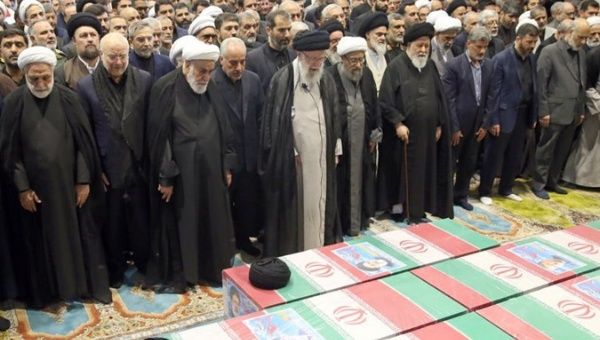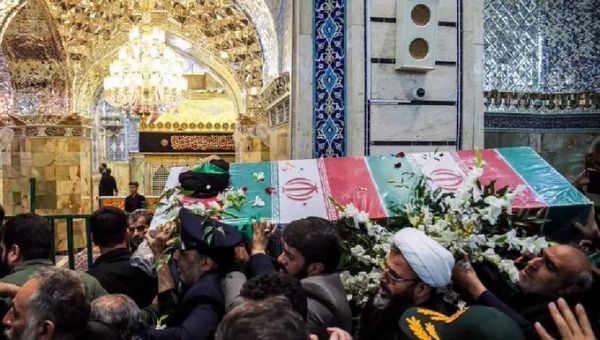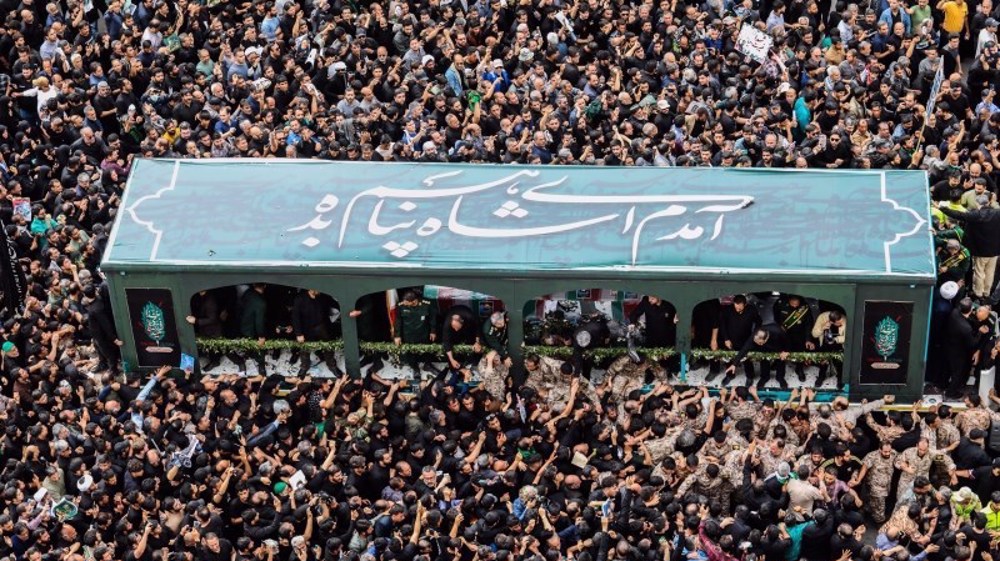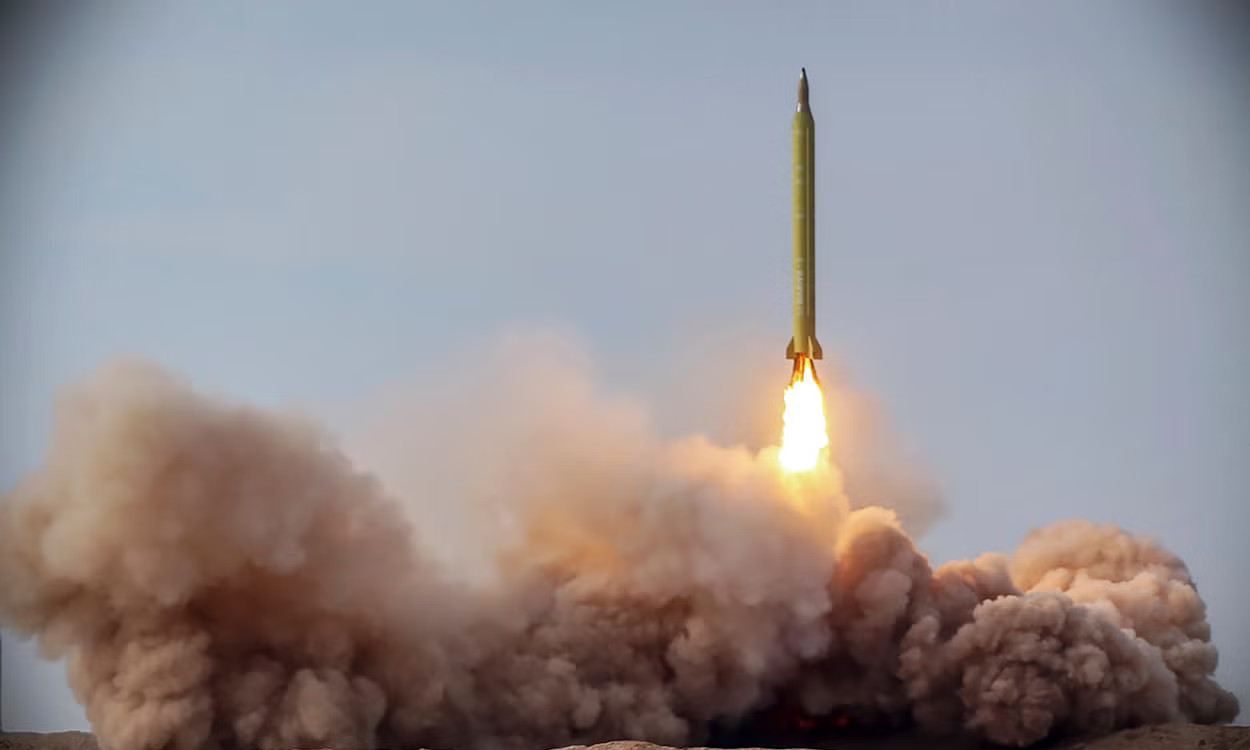Foreign Minister Hossein Amir-Abdollahian and several other officials were killed in the crash alongside the president
News Desk
MAY 20, 2024

(Photo credit: Iranian Presidency)
Iran announced early on 20 May that President Ebrahim Raisi, Foreign Minister Hossein Amir-Abdollahian, and those accompanying them were killed in the helicopter crash northeast of the country.
“Foreign Minister Hossein Amir-Abdollahian, East Azerbaijan Province’s Governor Malek Rahmati, and Mehdi Mousavi, the head of Raisi’s guard team were on board the crashed aircraft as well. Mohammad Ali Al-e-Hashem, the Supreme Leader’s representative in the province also accompanied them,” IRNA news agency reported.
“Local officials present at the crash site have confirmed the martyrdom of Raisi and his accompanying team.”
The Iranian cabinet released an official statement saying: “The popular president of Iran, Ayatollah Raisi, has been martyred on the birth anniversary of Imam Reza (AS), the eighth Shia Imam. The indefatigable and hard-working president made the ultimate sacrifice on the path of serving his nation.”
After hours-long search operations through Sunday evening and early Monday, the Iranian Red Cresent Society (IRCS) finally came upon the wreckage of the helicopter crash, saying in a preliminary statement that “no sign of life” was found at the site.
The announcement came 16 hours after contact was lost with the helicopter. At least 73 rapid response and rescue teams were deployed for search operations. Azerbaijan, Russia, and Turkiye participated in the search efforts.
Rescue teams had great difficulty locating the site of the crash due to severe weather conditions and harsh terrain.
The crash took place earlier on Sunday as Raisi and his team were returning from an inauguration ceremony for a water dam project with Azerbaijan’s President, Ilham Aliyev, on Saturday.
“The president was also planning to visit a couple of provinces in the north; he does travel a lot in the country. We have 30 provinces, and every year, he’s promised to travel to each province at least once, so he’s constantly on the move,” Iranian political analyst and university professor Mohammad Marandi told Al Jazeera on 19 May.
According to the Iranian constitution, the president's responsibilities must be handed over to the First Vice President with the approval of Iran’s Supreme Leader. After 50 days, the country will go to elections and elect a new president.
Since his election in August 2021, Raisi successfully pursued the policy of looking eastward. Being the first Iranian president to officially visit China in 20 years, Raisi is credited with deeply enhancing Tehran’s relationship with Beijing.
Raisi also greatly developed his country’s ties to Moscow and several Latin American countries, including Nicaragua, Cuba, and Venezuela.
“I see Iran’s relations with Latin America not only from the perspective of bilateral relations, but also as a continuation of the Russia–China bloc in which Iran is involved through its policy of looking East … We have common interests, common visions and common enemies,” the president said last year during a meeting with Venezuelan President Nicolas Maduro.
Raisi’s term also saw the historic reconciliation of ties between Iran and Saudi Arabia and the continuation of Iranian support for the Palestinian cause.
“With Raisi's unfortunate death, Iran, the Axis of Resistance, and the world have lost a visionary, goal-oriented leader, a staunch supporter of the rightful Palestinian cause, and one of the main pillars of the battle against Western arrogance and hegemony,” Ahmad Karakira wrote for Al Mayadeen on 20 May.
https://thecradle.co/articles/iranian-p ... pter-crash
World mourns ‘tragic loss’ of Iranian president Raisi
Regional and international leaders, as well as representatives of the Axis of Resistance, have all expressed sorrow over the passing of the president and his team
News Desk
MAY 20, 2024

(Photo credit: Iran's Presidency/WANA, Via Reuters)
Leaders and officials from several countries began to offer their condolences to Iran on 20 May following the announcement of the deaths of President Ebrahim Raisi, Foreign Minister Hossein Amir-Abdollahian, and other officials in a helicopter crash northwest of the country.
“In Russia, the President of Iran Ebrahim Raisi and the Minister of Foreign Affairs of Iran Hossein Amir-Abdollahian were known as true, reliable friends of our country,” Russian Foreign Minister Sergei Lavrov said on Monday morning.
“Their role in strengthening mutually beneficial Russian-Iranian cooperation and trusting partnership is invaluable,” Lavrov added, extending “condolences to the families and friends of the victims, as well as to the entire friendly people of Iran.”
“Our thoughts and hearts are with you in this sad hour.” Moscow was involved in the hours-long search efforts to locate the presidential helicopter the night before.
Chinese President Xi Jinping also expressed his condolences, China’s Ministry of Foreign Affairs said. Xi called the accident “a great loss for the Iranian people.”
The EU also expressed “sincere condolences” to Iran.
Indian Prime Minister Narendra Modi said he was “deeply saddened and shocked by the tragic demise” of Raisi, Amir-Abdollahian, and their accompanying delegation, who were returning from an official trip to Azerbaijan. “My heartfelt condolences to his family and the people of Iran. India stands with Iran in this time of sorrow.”
Prime Minister of Pakistan, Shehbaz Sharif, sent condolences “on this terrible loss” and said, “The great Iranian nation will overcome this tragedy with customary courage.”
Azeri President Ilham Aliyev, who met with the Iranian delegation during an inauguration ceremony for a water dam project just one day earlier, said he was “deeply shocked by the news of the tragic loss suffered by our friendly and brotherly Islamic Republic of Iran and its people” in a statement addressing Iranian Supreme Leader Ali Khamenei.
Jordan’s King Abdullah II, UAE President Mohammed bin Zayed (MbZ), and Qatar’s Emir Tamim bin Hamad Al-Thani all sent heartfelt condolences to the Islamic Republic.
The Secretary-General of the Gulf Cooperation Council (GCC) expressed the “deepest condolences” and “reaffirmed the solidarity of the GCC with the government and people of Iran.”
“I remember my brother, President Raisi, with all respect and gratitude,” said Turkish President Recep Tayyip Erdogan, whose country also took part in efforts to locate the helicopter on 19 May.
Other Arab leaders and representatives of the Axis of Resistance expressed deep condolences to the people and leadership of Iran.
“We extend our heartfelt condolences and sympathies to the Supreme Leader of the Islamic Republic, Ayatollah Sayyed Ali Khamenei, and the leadership and people of the Islamic Republic. We affirm that Iraq stands by the Iranian people during this difficult time,” said Iraqi President Abdul Latif al-Rashid.
Lebanon has announced three days of national mourning for the deaths of Raisi, Amir-Abdollahian, and the rest of their team.
In a statement, Lebanese resistance group Hezbollah gave “its deepest condolences and feelings of sympathy” to Iran's Supreme Leader, leadership, and people.
“We have known His Eminence, the martyred president, closely for a long time. He was a big brother to us, a strong supporter, and a staunch defender of our issues and the nation’s issues, most notably Jerusalem and Palestine, and a protector of the resistance movements and their fighters in all the positions of responsibility he assumed,” Hezbollah said.
Hezbollah also expressed sorrow over the loss of the “active and sacrificing minister,” Amir-Abdollahian, and the rest of Raisi’s team who were killed in the crash.
“We express our shared feelings of grief and pain with the brotherly Iranian people, and our complete solidarity with the Islamic Republic of Iran, in this painful and grave accident,” said Palestinian resistance group Hamas.
Mohammad Ali al-Houthi of the Yemeni Ansarallah resistance movement expressed “deepest condolences to the Iranian people, the Iranian leadership, and the families [of the victims].”
Syrian President Bashar al-Assad expressed condolences to the Iranian Supreme Leader, government, and people, calling the president “a martyr for the sake of duty” and affirming solidarity with the families of all the victims of the crash.
https://thecradle.co/articles/world-mou ... dent-raisi
*******
Iran confirms death of President Raisi
May 20, 8:00

Iran has officially confirmed the death of Iranian President Ibrahim Raisi.
Among the dead, in addition to Raisi, are Foreign Minister Hossein Amir Abdollahian, Governor of East Azerbaijan Province Malek Rahmati, Friday Imam of the city of Tabriz Mohammad Ali Ale Hashem, and Chief of the Presidential Guard General of the Islamic Revolutionary Guard Corps Mehdi Mousavi.
The crew included two pilots and one technical worker, their names have not been disclosed.
Iran is facing new presidential elections.
At the same time, an investigation into the causes of the helicopter crash will continue.
Regarding the stability of Iran's political system, it is worth remembering that Iran is actually ruled by Ayatollah Khamenei. The President of Iran plays an important, but still subordinate role. It is the ayatollahs who determine the military-political course of the country. The death of Raisi will most likely affect the internal political balance between conservatives and reformers within the Iranian establishment, while it can hardly be expected that Iran will abandon its current foreign policy course. The trend of recent years is the strengthening of the role of conservatives and the IRGC in the implementation of the general course.
https://colonelcassad.livejournal.com/9158805.html





















